#html5 games programming
Explore tagged Tumblr posts
Text
Game Dev Blog 05: Script Reader
01/31/2024
Completed!💾
created the ability to add in animated gifs between dialogue✅
created ability to swap backgrounds on the fly when characters are speaking✅
refactored code for readability✅
created enter functions for each character spot on screen✅
To do:
create a better looking textbox border🔲
continue to compile more scenes (trying to complete Arc 1)🔲
see where my code needs to be cleaned up and simplified🔲
#game development#devlog#dev blog#gamdev#javascript#html5#isometric#pixel art#coding#art masiah#megamaster#visual novel creator#vn program
8 notes
·
View notes
Text
0 notes
Text
How HTML, CSS, and JavaScript Work Together in the Browser
In web development, HTML, CSS, and JavaScript are the foundational technologies that bring websites to life. Each plays a unique role, but they work in harmony to deliver the modern, interactive web experiences we use every day. Understanding how they interact is essential for anyone entering the world of web development.
1. HTML: The Structure
HTML (HyperText Markup Language) is the backbone of a webpage. It defines the structure and layout of content on the web, using a set of tags and elements. These tags create headings, paragraphs, links, images, and other building blocks that form the content of a page.
Example: A simple HTML structure might include a <header>, <footer>, and various sections like <div> or <section>, which house text, images, and other media.
Role in Browser: When a browser loads a webpage, it first reads the HTML to understand the structure of the page and display its content accordingly.
<html> <head> <title>My Webpage</title> </head> <body> <h1>Welcome to My Webpage</h1> <p>This is a paragraph of content.</p> </body> </html>
2. CSS: The Styling
CSS (Cascading Style Sheets) is used to style and format the HTML elements on the page. It controls the look and feel, such as colors, fonts, spacing, layout, and overall visual presentation. Without CSS, websites would be plain and unappealing, consisting of only unstyled text and images.
Example: CSS can style a heading to make it bold, change its color, and add spacing around it.
Role in Browser: After the HTML structure is loaded, the browser then applies the CSS to style the webpage. CSS can be included directly in HTML or in separate .css files linked in the <head> section.
h1 { color: blue; font-size: 2em; text-align: center; } p { color: grey; font-family: Arial, sans-serif; }
When the above CSS is applied, the heading <h1> will appear in blue, centered on the page, and the paragraph text will be styled in grey with a specific font.
3. JavaScript: The Interactivity
JavaScript is the programming language that adds dynamic and interactive elements to a webpage. It allows for actions like responding to user input, handling form submissions, and updating content without needing to reload the entire page. JavaScript can manipulate both HTML (via the Document Object Model or DOM) and CSS, allowing for dynamic changes to structure and styles in real-time.
Example: A button on a webpage can trigger a JavaScript function that shows or hides a section of the content when clicked.
Role in Browser: The browser executes JavaScript after loading the HTML and CSS, allowing users to interact with the page. JavaScript files can be included directly within the HTML or linked externally.
<button id="toggle">Click Me</button> <p id="text">This is some text.</p>
<script> document.getElementById("toggle").onclick = function() { var text = document.getElementById("text"); if (text.style.display === "none") { text.style.display = "block"; } else { text.style.display = "none"; } }; </script>
In this example, when the button is clicked, the paragraph’s visibility is toggled between “shown” and “hidden” using JavaScript.
How They Work Together
When you load a webpage, the browser follows a specific process:
Load HTML: The browser first parses the HTML document to create the structure of the page.
Apply CSS: After the HTML is loaded, CSS is applied to style the HTML elements based on the rules defined in the stylesheet.
Execute JavaScript: Once the structure and styles are in place, the browser executes JavaScript to add interactivity and dynamic behavior.
Each of these technologies relies on the other to function optimally:
HTML provides the content and structure that CSS and JavaScript work on.
CSS enhances the visual appeal of that structure by styling elements.
JavaScript enables real-time interaction and dynamic content changes, improving the user experience.
Together, they form the foundation of any modern website, creating a seamless experience from static content to visually appealing design and interactive elements.
Build Your Web Development Skills with Naresh IT’s HTML, CSS, and JavaScript Online Training
If you’re looking to master the essentials of web development, Naresh IT’s HTML, CSS, and JavaScript Online Training is the perfect course to get you started. With expert instructors, hands-on exercises, and real-world projects, you’ll gain the skills necessary to create dynamic, responsive, and user-friendly websites.
Whether you’re a beginner or aiming to enhance your web development knowledge, Naresh IT offers a comprehensive curriculum that ensures you can confidently build and style web applications.
Join Naresh IT’s HTML, CSS, and JavaScript Online Training today and take the first step toward a successful career in web development!
#htmlcss#htmlcoding#html css#html#html5#css#javascript#frontenddevelopment#programming#html5 game#100daysofcode
1 note
·
View note
Text
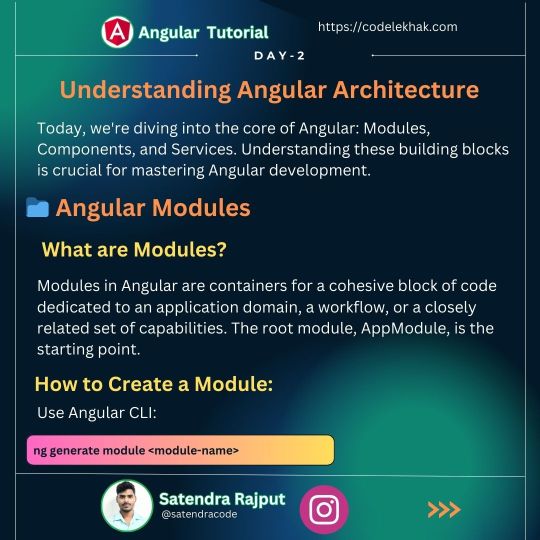
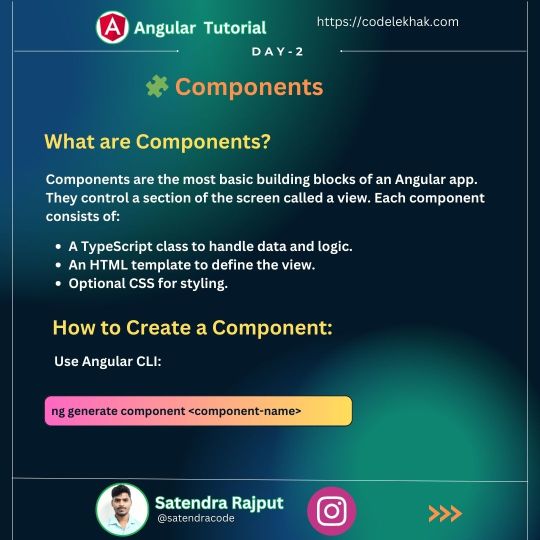
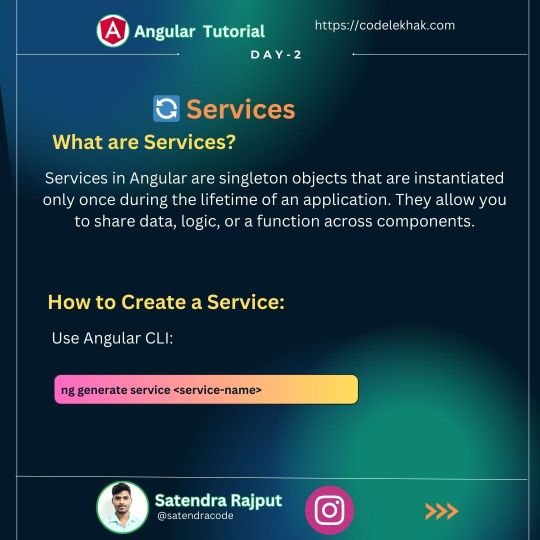
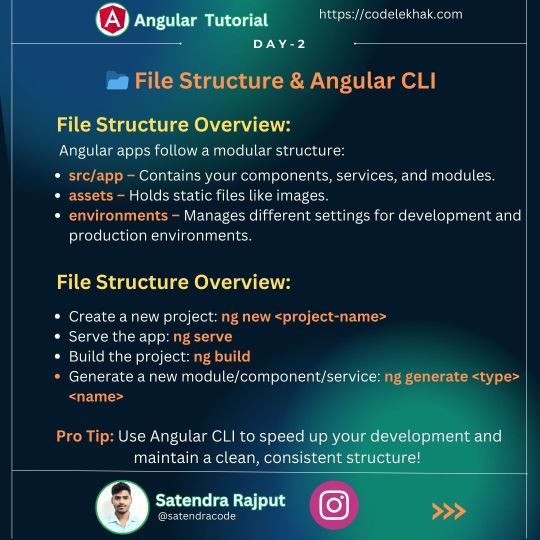
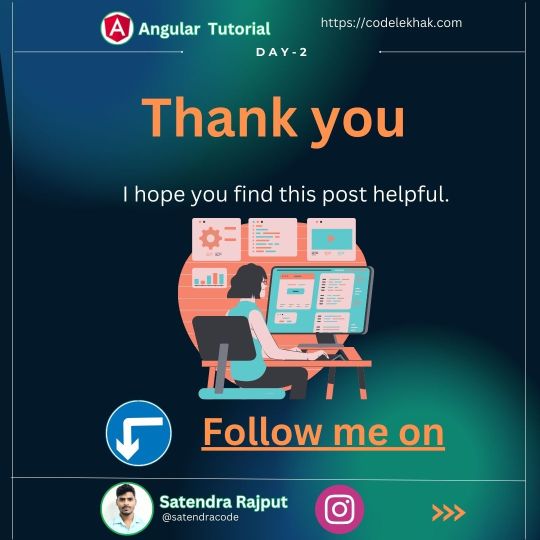
🚀 Day 2: Understanding Angular Architecture 🛠️
Today, we're diving into the core of Angular: Modules, Components, and Services. Understanding these building blocks is crucial for mastering Angular development.
#mongo#mongoose#node.js#express#node#nodejs#angular#css animation examples#cs submission#css3#mean stack#mean stack development company#html5 css3#html5#html5 game#javascript#html css#htmlcoding#html#coding#programming
0 notes
Text
Been really digging Frank's Laboratory on Youtube for JavaScript + Canvas tutorials since coming across him this past week. He keeps everything clear and shows patience for beginners. It's really been keeping me motivated to learn game dev in JS too! My dream...
#he goes through each thing and intentionally puts in mistakes to show how to troubleshoot them too!#super valuable to learn troubleshooting code and knowing what to look for 👍#also you guys GOTTA see his insane Canvas particle effects and animations PLEASE GO LOOK#regardless if you understand the code behind it it's mesmerizing!!#wk speaks#programming#javascript#web development#html5 canvas#game development#I've made a few simple games the last few months from other channels too#I love Youtube for learning these things 'cause I do best with step-by-step demonstrations I can follow#some don't explain things super well though so I don't get to fully understand what I followed#I gotta try my hand at tic-tac-toe again where I can understand the mechanisms of mapping its varied win/lose conditions#my first time doing it there was some binary code manipulation that lost me so much sdfsdf#I'm not THAT advanced yet oh gosh
0 notes
Note
have you tried out any game making programs besides Blender? I'm currently learning UE5.
I am actually using UE4 for my main projects! Blender is for static animations and making 3d meshes.
While I could upgrade the version to 5, I'll prob just stick to 4 out of laziness and not wanting to break some random plugin dependencies I got awhile ago.
Also HTML5 export was dropped after 4.23 so I use an extra even older UE4 for that as well. (Lobcollab and Artfight 2024 Warioware Game are both UE4 HTML5)
20 notes
·
View notes
Text



adrian drawn with some art games/programs archived on flashpoint. the programs used in order are zefrank's drawtoy, video-igrice's drawing artist, and nick jr's free draw (specifically the html5 one)
138 notes
·
View notes
Note
So, What program are you using for the walk through?
google recommended gdevelop for html5 games and i don't know any better so i'm using that! so far i like it well enough tho it's one of those things where it's supposed to have templates for everything so people can make games without learning to code but then it totally doesn't and you have to know how to code anyway (i think this might just be every game making software ever, they all seem to be lacking seamless built-in functionality for the most basic stuff, like giving the player different walking animations based on which way you're going and generic rpg dialogue boxes)
the backend parts are basically done so now it's just doing a bunch more sprites, probably a bitmap font since regular courier is looking kind of shitty when rendered ingame, and implementing the dialogue and interactable objects
here are some "sneak previews" ft jade's real final talksprite
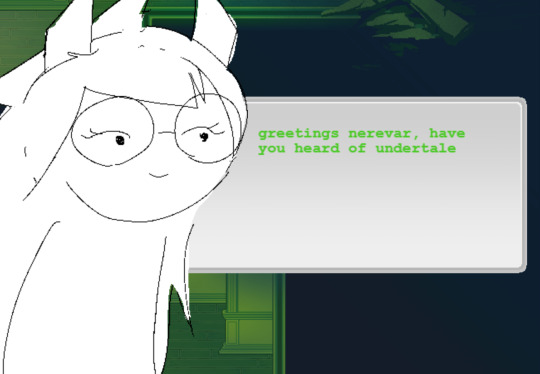
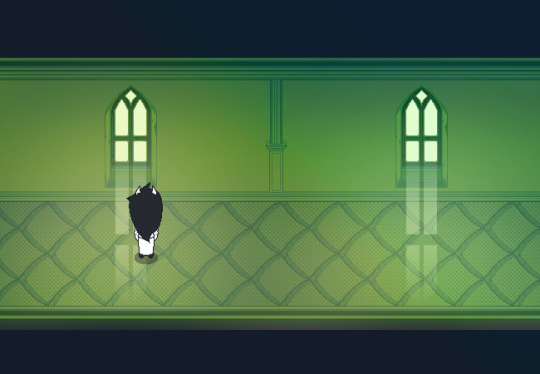
24 notes
·
View notes
Text
Flash Was Killed Because It Was Objectively Dangerous
I get it, I get the Flash nostalgia and the fondness for old Flash games. I was big on Neopets before they decided to ruin the art and make all the pets samey paper dolls to play dressup with (completely ruining the point of the far more expensive "redraw" colors like Mutant and Faerie and Desert). I have fond memories of Newgrounds games and I even managed to take a class for a semester in high school where I could learn flash.
But I also remember how terrible it was. And you should too.
Leaving aside all of the issues involving performance and inaccessibility (such as being easily broken by bog-standard browser actions like the back button, and its ability to modify web code AND OS code in real time likely broke a lot of accessibility tech too), Flash was legitimately one of the most dangerous web technologies for the end user. An end-user is you, or more specifically back then, child-you.
According to Wikipedia and its sources, Flash Player has over a thousand vulnerabilities known and listed and over 800 of these lead to arbitrary code execution.
What is arbitrary code execution? That's when someone can just run any commands they want on a machine or program that didn't intend it. A fun way to see this is in this infamous Pokemon tool-assisted speedrun where they manage to get an SNES to show the host's twitch chat in real time. It's not so fun though when it's someone stealing all the files on your computer, grabbing your credentials so they could clean out your Neopets account (yes, really, it was a pretty common concern at the time), and other nefarious works. Also, there was a time where it allowed people to spy on you with your webcam and microphone.
Oh and on top of all of this, Flash had its own "flash cookies", which could not be cleared by ordinary means and thus could be used to track users indefinitely, at least until Adobe slapped a bandaid over it by introducing yet another screen an ordinary person wouldn't know to use. (I assume this is how the infamous neopets "cookie grabbers" worked, so they could get into your account. This is mainly what I remember about using Flash back in the early 2000s lol) So it not only was a "stranger taking over your machine" concern, but a bog-standard privacy concern too, arguably a precursor to our current panopticon internet landscape, where greedy websites would track you because they could and maybe get some money out of it, facilitated by this technology.
When Apple decided to block it, it wasn't out of greed; Steve Jobs cited its abysmal performance and security record, among other issues such as an inherent lack of touchscreen support, and Apple cited specific vulnerability use-cases when blocking specific versions before they nuked it entirely. When Mozilla, who makes Firefox, decided to block it, it's not like they would've gotten money out of doing so, or by offering an alternative; they did so because it is fucking dangerous.
Your ire and nostalgia is misplaced. Flash was not killed by our current shitty web practices that ruin unique spaces and fun games. Flash was killed because both Macromedia (its original developers) and Adobe were incapable of making it safe, if that was even possible, and it was killed after third-parties, in an unprecedented gesture, collectively threw their hands up and said enough.
Well, that and HTML5 being developed and becoming more widespread, being able to do everything Flash can do without being a pox on technology. One could argue that you should bemoan the lack of Flash-to-HTML5 conversion efforts, but that requires asking a lot of effort of people who would have to do that shit for free...and if they have to run Flash to do so, opening themselves up to some of the nastiest exploits on the internet.
Nostalgia is a fucking liar. The games themselves I think are worth having nostalgia over (look, I still find myself pining for that one bullet hell Neopets made and Hannah and the Pirate Caves), but Flash itself deserves none of that, and absolutely deserved to be put in the fucking ground. You're blaming the wrong causes. It was terrible.
(specifics and sources found via its wikipedia page, which has a lot more than is mentioned here. and also my own opinions and experiences back then. lol)
#flash#nostalgia really is a liar#don't trust it#technology#yet another instance of my unfettered autism#adobe flash#macromedia flash#the old web#I was there gandalf three thousand years ago lmao#personal context: I am now a software QA that tests web apps#and when I was a child I was absolutely a neopets addict and am on Subeta TO THIS DAY#I learned HTML and CSS when I was 12#largely to spruce up my Neopets profile#I have been on the internet A While now#(I understand how ironic it is given that my tumblr layout is kind of shit; I will fix it soon)
20 notes
·
View notes
Note
if pet hotel had little games and activities like neopets or club penguin puffle games, what would they be?
whatever would be within my skill level to program i guess
i think i would start out with a game where the pet is holding a basket beneath some trees and you have to catch falling fruit by moving the pet left and right. sounds nice and simple enough, and once i had enough of a variety of simple games i would then feel free to try and experiment with something more complex and take as much time as i need since the simple games are able to fill that space where something needs to be right now
if i made this a website-based virtual pet game like neopets and flight rising are, something that's gonna be tricky and would probably take me a long time is i would have to learn how to make an html5 application (which is what these games would be if this was the case, since flash is dead) that would be able to read pet information and user information from a database so the pet could appear in the minigame, be able to modify values like the amount of money the player has so the player can earn money by playing these games, and this database needs to be able to be read and written to by both these minigames and by regular pages like a player's profile page where you'd be able to see your current money balance, for instance. The only experience I have in regards to creating an html5 application is running the html dist Gradle command that libGDX has, which just converts all of your java code into javascript as its own contained thing when for this I would need to make something that actually has the ability to talk to other things. I would have to learn a ton of php in order to make this a thing as well, which I don't have a lot of experience with either.
If I were to turn the pet hotel into a fully-fledged automated and programmable game with my current knowledge and skillset, I think I'd have an easier time using libGDX and Java Swing to make it, and then people would have to download a jar file for it off of itch.io in order to play it. I feel like more people would play it if the game was entirely website-based because people don't really like to download things, which is kind of understandable, but learning web development is really hard and from what little I do know about it I'm kind of bad at it. I took a class where I learned how web sockets work in Java so I think I could be able to make something that connects online like this, but I would have to rent some server space in order to do this so the pet hotel would become something that starts actually costing me money to run if I did this. Also I already have a full-time job so the progress I would make on this would be pretty slow, and sometimes I struggle to muster up the motivation to even just make regular art during the time that I'm not working because my brain just kind of sucks like that. So for now i just run this thing that pretends to be a video game but is actually not because my brain prefers the instant gratification of watching youtube videos and playing video games that other people have already made instead of using that time to learn how to make a video game myself
3 notes
·
View notes
Note
I’m curious: what is oekaki?
Hi! Good question. We can start with a quote from Waccoon, the creator of the Wacintaki Oekaki Boards that me and a lot of others have used in the english speaking sphere.
Oekaki is a Japanese term that roughly translates to “doodle” or “scribble.” On the Internet, oekaki boards are bulletin boards or forums dedicated to drawing pictures that are drawn using a paint program that runs in a web browser. Traditionally, early oekakis were simple pictures drawn with few colors on a canvas measuring 300 × 300 pixels, and they were posted sequentially, rather than in a threaded gallery format. Oekaki boards started showing up on Japanese web sites around 1998, were only available in Japanese, and were often dedicated to anime and video game fan art. Today, the drawing programs are much more sophisticated and allow more complex drawings of different sizes and in multiple layers, but the oekaki bulletin board format usually remains the same. Oekakis are largely dedicated to original work you have drawn yourself. Photographs or work you did not create yourself are discouraged, and in most cases are not allowed. Some oekaki boards allow you to upload pictures from your computer, but most do not. The term “oekaki” may refer to both oekaki drawings and an oekaki board. When someone draws an oekaki, they are drawing a picture. When someone draws on an Oekaki, or looks at oekakis, they are usually referring to participating on an oekaki board.
In English speaking spheres, many oekakis were dedicated to anime, pokemon, or other such popular media in the 2000s. Despite this, many of us liked to draw sparkle animals to represent ourselves in images, thus birthing the oekakidog. As said in the quote, art programs have far surpassed what the old oekaki applets can do, and are much more accessible to a young burgeoning artist than back then, so oekakis fell out of interest, and the removal of java applet support in modern browsers all but was the nail in the coffin for oekaki.
However, a lot of us are nostalgic for the old programs we used to draw in and the allure of a bulletin board styled way of community, so there's been attempts at reviving oekakis. With Paint BBS Neo basically a 1:1 port of the original Paint BBS we all loved in HTML5, I do think Oekakis have a chance at revival and for a new generation of artists to use. Who knows what the future holds?
Mod Cy
28 notes
·
View notes
Text
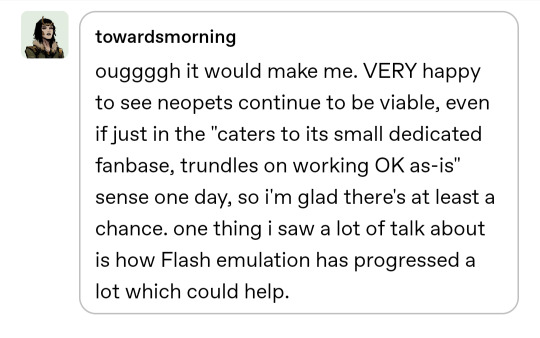
Reply too big to keep in replies, forgive me
Flash emulation won't actually work with the way the site is coded. It's really difficult to truly illustrate HOW fucked the site is if you aren't familiar with it.
So the flash games are INTEGRATED into the site. They don't just play. They send scores and those scores are validated by the site and then affect the game in real time by awarding points. Thats backend stuff and it seems EASY. But flash EMULATION will not really let that process work. Not blanket. Ruffle is a browser add on for flash and you can play some games with it but every game has needed to be worked manually and individually to try and get it to play correctly and to let it send scores.
Here, so like. Last year you may recall having heard about the data breach. It was a long time coming. Neopets has terrible security and always has. So someone got backend access, downloaded the server and this had all of the usernames and passwords ever used. Were they hashed? Yes. Was the hashkey stored in the server and thus also available to the hacker? Also yes.
As a result neopets finally moved from http to https. Great!
Not for flash games.
Every game has links in it right. Backend stuff. Mechanics. But all those fucking links redirect to http, not https. And you cannot change that without editing the game and you can't do THAT without a program that makes flash elements. So they're basically unfixable on site. On one fell swoop, every single flash game broke at once. You could play them but scores were now unsendable.
The workaround neopets USERS found was, I shut you not, using developer tools to modify the way your entire computer communicates with the internet

"oh, that seems simple"
Look the fuck at what is IN the js file
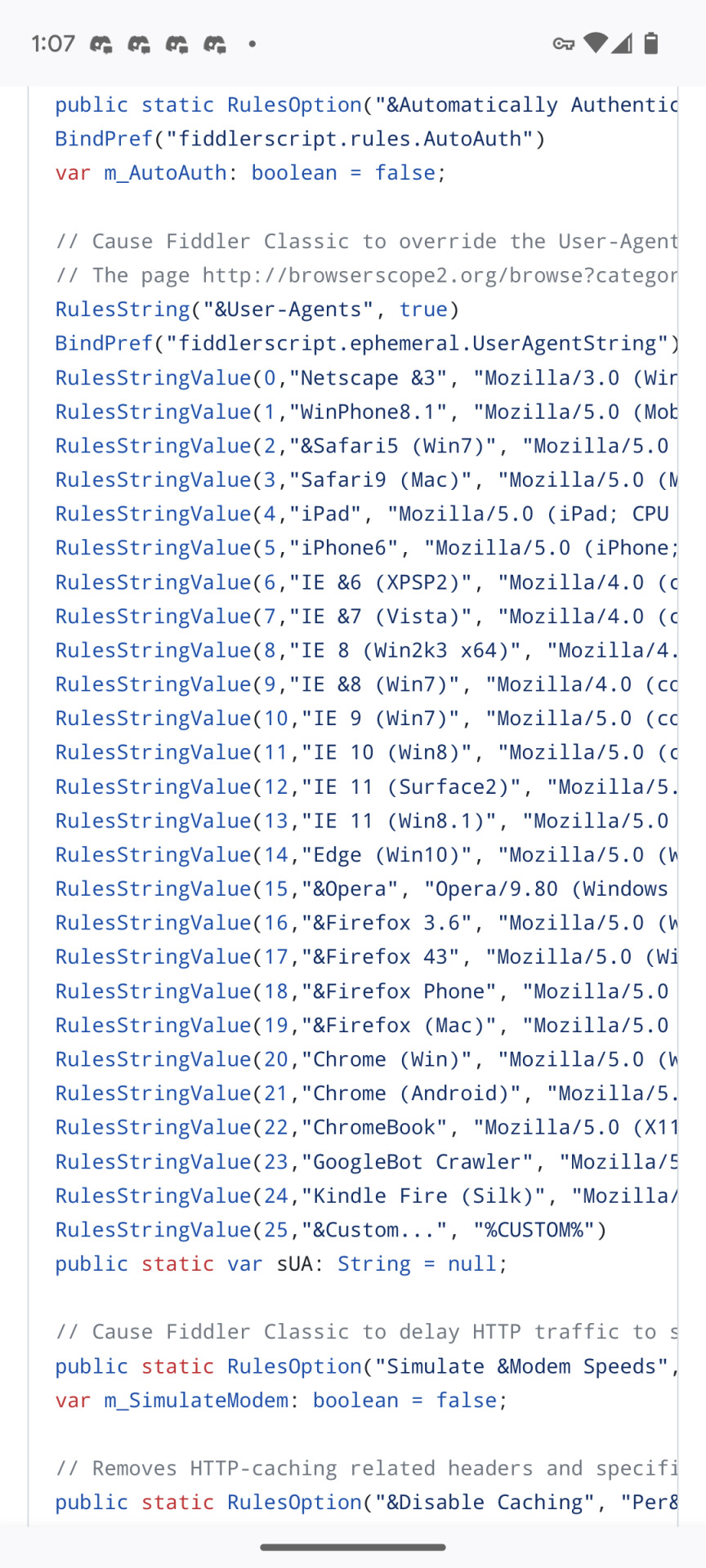
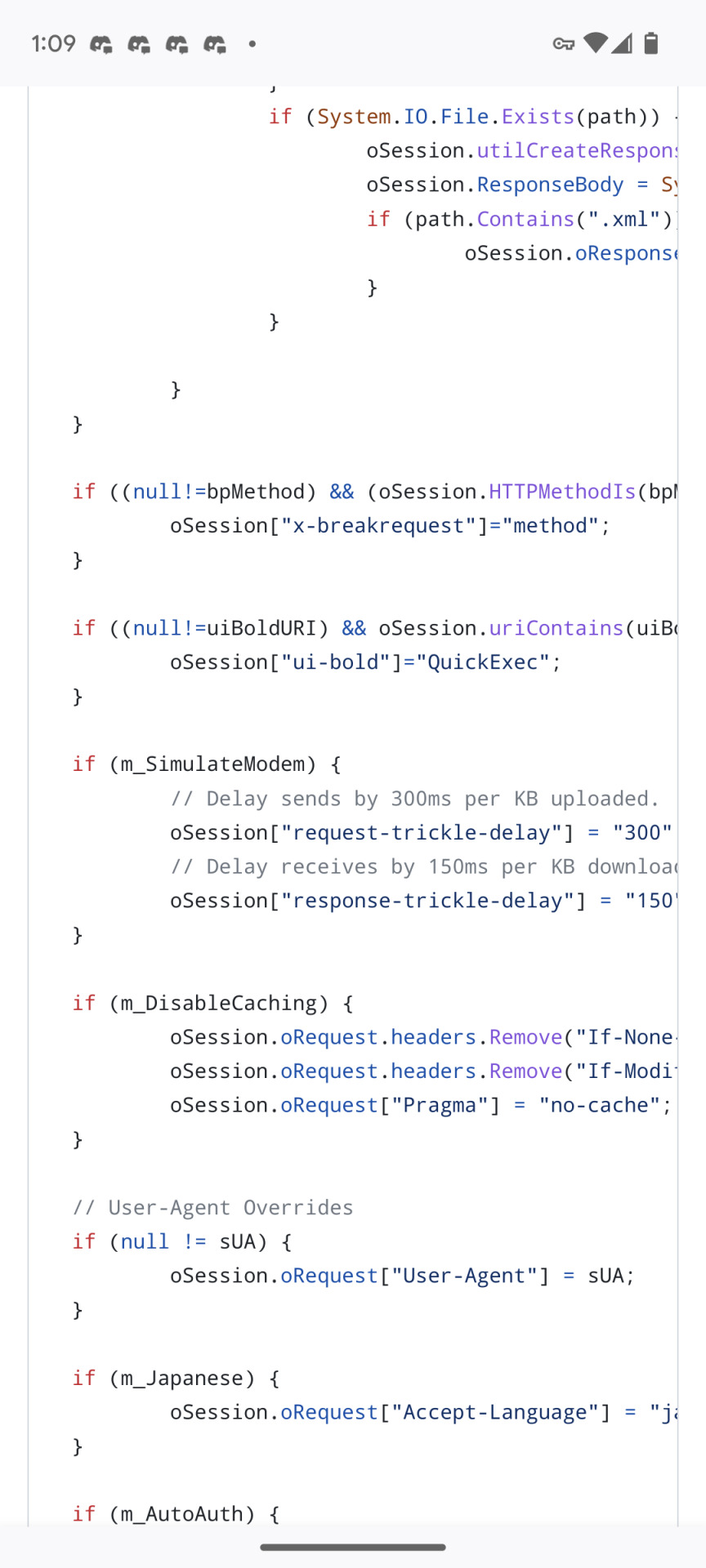

It is 538 lines! It is manually overriding the links used in these games. This IS hacking. Technically this is against the rules, it's just not being enforced.

Don't worry, I'm terrified.
The workaround before this STILL had you download a new browser, modify it, take your internet offline and manually reinstall an old version of flash to create a jury rigged flash browser. Oh my God this is so dangerous and we Still do this. Did I do all this fiddler stuff? Yes! I did! Because neopets is very much like transformers in that there is a small user base but every single person there is fucking insane!
So.... Emulation is not a solution. Every game needs to be individually ground up REMADE in html5. And you can't just import the old game and tweak it. It has to be made from scratch. That's why there are so few html5 games. It's incredibly difficult and time consuming and probably not all that worth it when there's so much to be done.
This is what I mean when I say the site is virtually unplayable. This is the kind of shit that we have to do to make the site work. You basically cannot play unless you are accessing fan sites and communities to find resources that can offer fixes to everything that is broken. There are legitimately pages of this website that have not been updated since 1999. Until like two years ago you still could not say "gay" on the forums because the chat filter caught it. And do you know why?? Staff literally did not know where the chat filter was stored in the backend. They could not find it. The site traded hands and staff so much that no one remained who knew where it was.
There is LITERALLY a guy who found backend access several years ago and can, whenever he wants, get into the server and look at everything. HE could have stolen those passwords (which the other hacker was selling for $10,000!!) At any time he wanted. Instead he just made an anonymous reddit account where he would post info about how the fucking site works and why things are broken and "yeah they lied about fixing this its still broken" or "yeah actually they secretly shadowbanned a bunch of people from submitting scores to the big yearly event next year if you dm me I can tell you if you're on the list"
And he IS STILL THERE!!!! HE STILL HAS SERVER ACCESS!!! ITS BEEN YEARS AND THEY HAVENT KICKED HIM OUR BECAUSE THEY STILL HAVENT FOUND THE BREACH!!!!!!!
This. THIS is what staff is dealing with. THIS is the absolute shit storm they need to tackle if they want this site to work. The way pets are stored, the way accounts work, all of those things cannot be changed without causing severe issues conflicting with users accounts, pets, items, and all of that was originally coded in 1998/1999 and it cannot be changed. It cannot be modernized. They need to find ways to integrate old code that cannot be changed into a site coded for a modern internet. That is beyond the scope of normal site building.
All that is to say... I'm hesitant to believe things will improve, not because I don't think staff wants to, not because I don't think they have the drive and the passion to throw everything they have at it. Just because... Jesus dude I don't know if they actually have the resources to fix this mess at all.
17 notes
·
View notes
Text
A Beginner’s Guide to Game Development: Getting Started With the Basics

Understanding the Fundamentals of Video Game Development
Game development courses refer to the steps involved in creating a video game. It incorporates several different fields, such as animation, sound design, painting, programming, and more. Game development is a difficult process that calls for a broad set of abilities.
Steps of Game Development
Step 1: Knowing what kinds of games exist and choosing the sort you want to make are the initial steps in the game production process. There are a variety of genres, such as action adventure puzzle simulation.
Step 2: Selecting a game engine comes next. A game engine is a software development kit that provides the necessary instruments and materials to create a game. There are numerous games available, including
Cryengine
Unity
Unreal Engine
Step 3: Selecting a game engine comes next. A game engine is a software development kit that provides the necessary instruments and materials to create a game. There are numerous games available, including
Creating a concept
Coming up with the story
Creating art assets
Developing characters
Creating environments
Designing game mechanics
Step 4:
Once you have designed the game, you’ll need to program it.
This involves writing code to control the game’s logic and behaviour.
Step 5:
Now that we have developed the game, we need to test it.
Testing ensures that the game functions as intended.
This step also involves correcting any discovered bugs.
Selecting a Platform You have four primary options for the platforms on which to develop your game. The kind of game you can make depends on the platform you select. There are many kinds of platforms. Desktop Platforms
Mobile Platforms
Web Platforms
Console Platforms
Desktop Platforms
The most popular and adaptable platforms for game creation are desktop ones. They demand highly sought-after technological abilities and provide a high degree of flexibility in game design. Among the widely used desktop platforms are
Unity
Unreal Engine
GameMaker Studio
Mobile Platforms
Mobile devices are an excellent platform for creating games intended for a wide audience. Compared to PC games, mobile games are frequently easier to play and require less technological expertise. Among the widely used mobile platforms are
Unity
Cocos2d
Corona
Web Platforms
Using Web platforms, it is possible to make browser-based games. They are comparable to most mobile games and frequently far simpler than PC versions. Well-known websites include
HTML5
Flash
Unity Console Platforms Console games typically demand greater technical expertise and are more sophisticated than other games. Among the widely used console platforms are
Xbox
PlayStation
Nintendo
Finding Resources and Tutorials The next step after mastering the fundamentals of game creation is to look for tools and tutorials to help you advance your understanding and proficiency. Thankfully, there are tons of excellent web resources accessible to assist you in getting started.
Online Tutorials Online tutorials are among the best places to start. For every kind of game development, there are several tutorials online, ranging from entry-level materials for novices to more complex ones for seasoned creators. These tutorials give you the knowledge and resources you need to make your own games, in addition to teaching you the fundamentals of game development.
Online Forums Online forums are another great resource for game development. These forums are a great place to ask questions, get advice, and find resources for game development. You can also find helpful tutorials and tips from experienced game developers.
Books and Websites Finally, there are numerous publications and websites dedicated to the vast field of game creation. These resources — books and websites — offer comprehensive knowledge on game creation as well as practical advice. You may simply master the fundamentals of game development and begin making your own games by utilizing these tutorials and tools.
Creating a Game Plan Now is the time to draft a strategy. The following should be included in this plan: Describe the idea behind the game: What kind of video game are you making? What is the objective? Who is the intended audience?
One of the most crucial phases in the game development process is creating a plan of attack. It will assist you in remaining focused and organized. A well-thought-out approach will enable you to make a profitable game.
Testing and Debugging Testing and debugging are essential components of game development. It is the process of locating and repairing coding problems in video games. This procedure is required to make sure there are no issues and the game functions properly.
Testing Testing involves playing the game and scanning it for errors or problems. You have the option to use automated testing tools or conduct manual testing. While automated testing tools can run tests that check for specific faults, manual testing entails playing the game and looking for any issues.
Debugging The process of identifying and resolving game code issues is known as debugging. To accomplish this, examine the code and search for any mistakes or problems. You can manually carry out debugging or use debugging tools. You can utilize debugging tools to locate the fault’s origins and assist in fixing them.
Releasing and Marketing Your Game
It’s time to release your game into the wild after you’ve finished it. Although marketing and releasing your game can be intimidating, you can ensure that the right people play and see it. First, make a plan for the game’s release and marketing. Select the platforms you wish to launch your game on, including:
Steam — for PC
App Stores — for mobile
Xbox/PlayStation — for Console
Research each platform to ensure that you meet the standards. Next, set up your game’s website and social media accounts. This will serve as the focal point of your marketing initiatives. Make sure your website is user-friendly and contains all the information prospective gamers may need about your game. Utilize social media to interact with potential players and promote your game. Lastly, draft a marketing strategy outlining your approach to game promotion. This might consist of:
Creating trailers
Posting screenshots
Gameplay videos
Running ads
To have your game mentioned in publications and on YouTube channels, you may also get in touch with influencers and the media.
Conclusion
It is important to understand the basics of game development before diving in. This guide provides an overview of the essential concepts and tools required to initiate game development. You can create your games and develop your skills with knowledge of the basics. With practice and patience, you can become a successful game developer.
Enroll in game development courses at the Unitedworld Institute of Design (UID) to gain the skills and knowledge you need. Visit the UID website to learn more and take the first step towards your game development career today!
This Blog Originally Posted Here: https://uid.edu.in/blogs/a-beginners-guide-to-game-development-getting-started-with-the-basics/
#animation and game design courses#game design courses#animation graphic design courses#game design courses gujarat#bachelor of animation
2 notes
·
View notes
Text
Progress Report #3
It's been a little over two weeks since my last update, and I’m glad to say that I got my first build of Sneaker finished! This build shows off the basic gameplay. I posted it on itch.io – here’s the link if you want to check it out: https://aliyah-burruso.itch.io/capstone-sneaker-first-build.
Needless to say, I managed to fix most of the issues with the game I mentioned in the last update. The first was making Sasha shoot after she finished moving rather than at the same time. The thing that helped was states, which is basically code that gives Sasha different behavior in different scenarios (Ex. moving towards a coordinate point, not moving at all, getting hit). I’m glad I learned this; not only does the game work more like how I want it to, but this could also help me in future projects.
Another issue I fixed was the respawn bug (where Sasha wouldn’t go back to her previous position after getting hit). In my previous post, I said it had something to do with the collision boxes. However, I figured out that the real cause was me not setting up the alarm that was supposed to send Sasha back right! Now that I fixed this, I can keep my original animation idea.
Of course, I still ran into some issues these past two weeks, mainly with exporting the game. The first time I tried to export it, I kept getting an error message saying that the “Developer ID” couldn’t be found. After looking it up, I learned that I cannot create executables for macOS without getting a Developer ID… which requires a $99 fee. This made me panic… until I realized that what I really wanted to do was to make an executable for HTML5. Fortunately, I don’t need a Developer ID for that, so I was able to export it.
…Then I learned that the game resolution was too big. I learned this after I posted it on itch.io. This meant that I had to resize the entire game and fix the code that told Sasha where to go and aim. Funnily enough, I managed to fix the code by a complete fluke (I was just messing around with the numbers and found the right one by accident). I’m not upset at this, though, since it meant that the game was now playable on a browser.
To be honest, I added more to the first build than I expected. This includes:
The title screen
The backstory
A tutorial (after I let my mom try out the game and she was completely stumped)
Once again, I’m all right with this because I don’t have to do it later.
On a side note, I may have to push the playtesting with students back. I contacted a person at a school who could help me get some students. She wanted me to send it to her first so that she (and the teachers) could test it out for themselves. I sent her the game, but I am still waiting to hear her response.
Moving on to the redesigns, I’ve been working on an alternate design for Sasha. Right now, I only have a B&W version, but I’m thinking that I may make her skin darker. My reasoning is that I want to make her hair and clothing lighter to stand out against the grid more; if I keep her skin light, there will be no contrast in her design. Other than that, I decided to give Sasha curly hair. I based it off of my hair when it’s let down. I tried to retain the “wing” aspect while also making it more unique. I’ve also been experimenting with a pineapple hairstyle. I can’t seem to get it right, though, so I may not use it in the end.
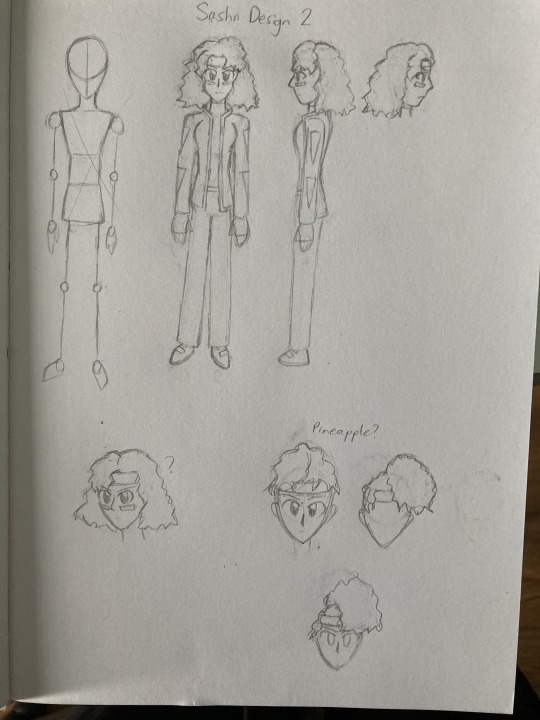
Besides that, I decided to completely revamp the design for Giga (the program Sasha uses to take down servers). My original idea was for it to be a rifle. However, I was always uncomfortable making a game for preteens/early teens about using a gun. My initial solution was to try to make the rifle super stylized, but at this point, I think the safer option is to just throw out the rifle idea. Instead, I’ve developed two alternatives. One is a “wrist gun” (where Giga is attached to Sasha’s wrist like a watch) while the other is a “power glove.” I’m thinking that I may go for the wrist gun idea; I tried sketching out the power glove, but it looked sort of silly (I unfortunately erased it…). On a side note, I’m also considering changing Sasha’s clothes. You can see one idea I have in the wrist gun sketch.
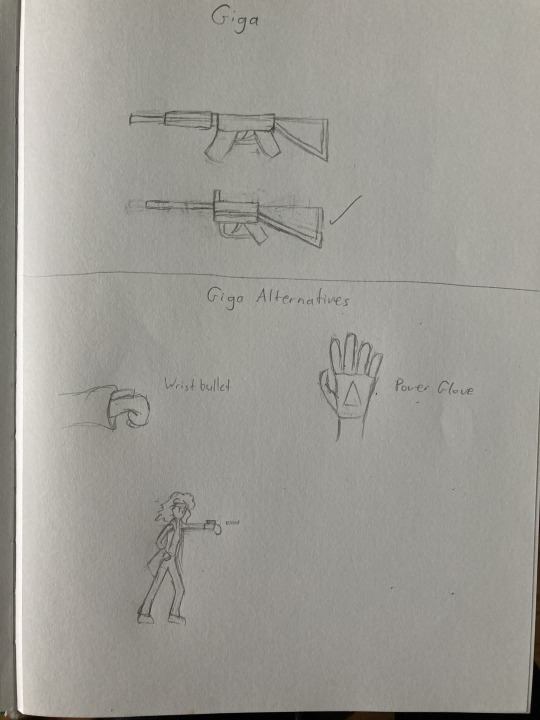
That’s all I have for this update. In the coming weeks, I’ll continue revamping all the designs (including the color schemes... I said I'd get them done in time for this update, didn't I?). I’ll also start on creating the final sprites for the game and adding them to the next build. Depending on when I get feedback, I may also fix up the gameplay. Let’s just see how things go…
2 notes
·
View notes
Text

Pabitra Banerjee is a Full-Stack AI Engineer with some knowledge of Blockchain Technology and a tech enthusiast. He is the Founder & CEO of MB WEBBER'S, a Software Development company based on Manbazar, Purulia, West Bengal. He is the Founder & CEO of some more companies based on Manbazar, like - Code Explorer, Dev Line Community, etc. He is working actively to spread Science & Technology to the common people. He is very fond of Astrophysics & Mathematics. He writes actively about Astrophysics and latest space missions by all of the space agencies on Universal Space Missions.
Biography
Pabitra Banerjee, born on January 22, 2004, is an individual with a notable presence in the technology sector. Hailing from Manbazar, West Bengal, he has demonstrated a keen interest and enthusiasm for various domains within the field. With a focus on spreading awareness and understanding of science and technology among the general public, Pabitra is involved in initiatives that aim to bridge the gap between technology and everyday life. His passion for astrophysics and mathematics is evident in his active engagement with topics related to space missions and scientific advancements. Pabitra Banerjee's endeavors reflect a commitment to the exploration and application of technology for the betterment of society.
Education
Pabitra Banerjee pursued his primary education at Manbazar Board Primary School and later continued his secondary education at Manbazar Radha Madhab Institution, both situated in his hometown. After completing his 10th standard under the West Bengal Board Of Secondary Education(W.B.B.S.E.) in 2019 and his Higher-Secondary Examination under the West Bengal Council Of Higher Secondary Education(W.B.C.H.S.E.) in 2021, he embarked on a journey in higher education. Initially enrolling in a B.Sc. Mathematics program at Bikramjeet Goswami Memorial College, under Sidho Kanho Birsha University, Purulia, he later transitioned to pursue B.Sc. Computer Science at Manbhum Mahavidyalaya under the same university in 2023. This academic path reflects Pabitra's interest in both mathematical and computer science domains.
Parents
Pabitra Banerjee is the only son of his parents.
Father : (1975 - present) Mr. Pulak Banerjee.
Mother : (1983 - present) Mrs. Babita Banerjee.
Development Projects
Pabitra has shared a lots of development projects done by him on his GitHub Account. From there we can know that he has knowledge about Full-Stack Web Development, Android App Development, Game Development, AI and Machine Learning, Blockchain Technology, DSA and many more domains of Computer Science. Here are some of his development projects -
Dev-Portfolio : This is one of his best portfolio website. The website has been built using HTML, CSS, SAAS and JavaScript. The website has a very clean UI and the design and responsiveness shows his ability to develop top class Front-End. Take a look at Dev-Portfolio.
Mac-Terminal-Portfolio : Pabitra has created a terminal interface of MacBook using HTML, CSS & JavaScript. There he has created a simple portfolio website. Take a look at Mac-Terminal-Portfolio.
Book-Finder App : A simple website to find your next book to read and book recommendations. An internship project of iNeuron. This website is developed using the React library of JavaScript. Try Book-Finder App.
Clash-Of-Space : Clash of Space is a cloned version game of the original Radius Raid of js13kGames (A JavaScript coding competition for HTML5 Game Developers) which is a popular game for kids. A space craft shooting game built with HTML5, CSS, JavaScript. It's a desktop version game, so can be played only in desktop/laptop. Play Clash-Of-Space.
MB Health Bot : MB Health Bot is a conversational agent designed to mimic a psychotherapist in order to provide emotional support to people with anxiety & depression. At its core, MB Health Bot is a chatbot trained on a text dataset using Deep Learning and Natural Language Processing techniques. MB Health Bot can provide general advice regarding anxiety and depression, answer questions related to mental health and make daily conversations. Try MB Health Bot.
If you want to explore some more projects done by Pabitra, please go to his GitHub Project Website and Pabitra Banerjee.
Core Programming Projects
Pabitra is a Full-Stack Web Developer, but he has the ability to contribute on Core Programming. He has developed a lots of JavaScript & Python Libraries to help developers to save their time and enhance efficiency. Some of his libraries are -
JS-DSA : JS-DSA is a comprehensive collection of data structures and algorithms implemented in JavaScript. This project is designed to be a helpful resource for developers, students, and anyone interested in learning about data structures and algorithms through practical JavaScript examples. Install JS-DSA.
Google-Image-Fetcher : Pabitra has developed three different libraries for three different programming languages - Python, C++ and JavaScript to download required images directly from your terminal.
Advanced Math : Advanced Math (adv-math) is a comprehensive JavaScript library that simplifies advanced mathematical calculations, covering a wide range of mathematical topics such as basic arithmetic, complex numbers, linear algebra, statistics, geometry, trigonometry, calculus, financial calculations, units and conversions, equation solvers, and math expression parsing. This library is designed to provide developers with powerful mathematical tools for various applications. Install Advanced Math (adv-math).
Please go to Pabitra's NPM Profile and PyPi Profile to find more libraries.
Visual Studio Marketplace
Pabitra has developed a lots of VS Code extensions, which are currently available on Visual Studio Marketplace.
IDX-Dark-Theme : IDX Dark Theme is a stunning dark theme for Visual Studio Code that brings the elegance of Google's IDX design to your coding environment. With its vibrant colors and thoughtful design, coding becomes a delightful experience. Take a look at IDX-Dark-Theme.
To explore more go to Pabitra Banerjee Publisher Account on Visual Studio Marketplace.
PyConda Programming Language
Pabitra is working actively working on PyConda Programming Language. PyConda is a simple, Python-based programming language designed for ease of use and extensibility. With PyConda, you can write and execute code in a straightforward and intuitive manner. He has already released the 1.0.0 version of PyConda and want to publish version 1.0.1 at January, 2024. Explore PyConda.
Published Books
Pabitra is a writer who loves to write Bengali stories, poem, song and etc. But now he has started to write in English Language and published his 1st eBook.
Beyond Bits and Bytes: A History of Technological Marvels :: Embark on a captivating journey through the evolution of technology, from the dawn of primitive tools to the dazzling horizons of quantum computing and nanotechnology. In this thought-provoking eBook, Pabitra Banerjee, a Full Stack AI Engineer and Blockchain Developer, explores the remarkable history of innovation, invention, and progress that has shaped our world. Discover the visionary pioneers who blazed trails in computing, the birth of the internet that connected continents, and the transformative impact of artificial intelligence. This compelling narrative not only delves into the past but also contemplates the ethical and societal considerations that accompany the technological marvels of today and tomorrow. Join us in this exploration of the past, present, and future of technology, and be inspired by the relentless human spirit of innovation. View this book on Amazon.
From Novice To Ninja: Mastering DSA in C++ :: Embark on a transformative journey through the realm of Data Structures and Algorithms with "From Novice to Mastering DSA in C++," authored by Pabitra Banerjee, a seasoned full-stack AI engineer and CEO at MB WEBBER'S, a prominent software development company in Manbazar, West Bengal.
Recognition
Pabitra has already been recognized by Google, thus he has a Knowledge Panel He is also an open source contributor. GitHub spotlighted him for his outstanding contribution in the last HackToBerfest.
2 notes
·
View notes
Text
the elephant collection has gotten me thinking about how much developing games for flash hit different.. you could embed animations and hand drawn stuff into practically any object so easily and seamlessly and i think thats how most of the creativity from that era was enabled, the jump to html5 felt so static and processed in comparison (at least when attempting to port old flash games)
I really cant think of any modern replacement for it that gives the same feeling since it seems like a lot of popular game engines are heavily based around loading assets externally? and programs like scratch feel a lot more limited in what they can do
5 notes
·
View notes